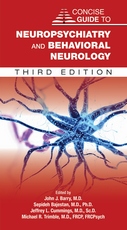Science and Psychiatry
Groundbreaking Discoveries in Molecular Neuroscience
View Pricing
Description
Solomon Snyder has been instrumental in the establishment of modern psychopharmacology—as a pioneer in the identification of receptors for neurotransmitters and drugs and in the explanation of the actions of psychotropic agents. Science and Psychiatry is a collection of some of his best scientific papers, publications ranging over forty years that represent important advances in psychopharmacology and molecular biology. Audacious and unanticipated when they first appeared, these papers opened up new areas of understanding and revolutionized the modern study of the brain. Republished here, they show why fundamental research into the messengers of the mind is as essential for clinicians as for researchers.
Many of these papers have clear clinical relevance, offering insight into modern neuroscience to help make sense of the bewildering array of available psychotropic medications and point the way toward more effective and safer agents. Others describe the underpinnings of psychopharmacology that practitioners need to know, especially regarding the role of receptors in drug action. Each of the nine groups of research articles is accompanied by a commentary by a well-known authority, putting the discoveries in perspective and providing a broad overview of subjects ranging from characterization of the enkephalins to serotonin receptor subtypes. The final set of papers focuses on apoptosis, the general process of cell suicide, where Snyder's work with bilirubin holds promise for treating neurodegenerative disorders. And in a closing piece, The Audacity Principle in Science, Snyder speculates about factors conducive to creativity and efficacy in scientific discovery.
The articles particularly describe four groups of extraordinary discoveries for which Snyder is widely recognized:
- Identification of opiate receptors, providing keys to understanding pain perception
- Characterization of the IP3 receptor, exploring its role as a target for lithium treatment in manic-depressive disorders
- Establishment of nitric oxide as a transmitter in the brain, radically transforming conceptualizations of neurotransmission
- Discovery that D-serine is the normal stimulus for the glycine site of the NMDA receptor, providing new insight into the regulation of the receptor important for learning and memory
Hailed as one of the preeminent scientists of the past twenty years, Snyder is a consummate researcher who confesses to remaining obsessed with the need to think thoughts no one else has thought before. Science and Psychiatry clearly shows how that urge accounts for the diversity of challenges he has taken on as it conveys the origins of modern psychopharmacologic practice.
Contents
- About the Author
- Foreword
- Introduction
- Part I: DISCOVERY AND CHARACTERIZATION OF THE OPIATE RECEPTOR- Radioligand Binding Methodologies: New Inventions, New Directions
- Chapter 1. Opiate Receptor- Demonstration in Nervous Tissue
- Chapter 2. Opiate Agonists and Antagonists Discriminated by Receptor Binding in Brain
- Chapter 3. Historical Review- Opioid Receptors
- Part II: CHARACTERIZATION OF THE ENKEPHALINS- The Discovery of Endogenous Opiates and Their Receptors: A Snyderian Saga of Skill and Judgment
- Chapter 4. Opiate Receptor in Normal and Drug Altered Brain Function
- Chapter 5. Morphine-Like Peptides in Mammalian Brain- Isolation, Structure Elucidation, and Interactions With the Opiate Receptor
- Chapter 6. Opioid Peptide Enkephalin- Immunohistochemical Mapping in Rat Central Nervous System
- Part III: DOPAMINE RECEPTORS AND INFLUENCES OF NEUROLEPTICS- Dopamine Receptor Binding and Its Therapeutics
- Chapter 7. Dopamine Receptor Binding Predicts Clinical and Pharmacological Potencies of Antischizophrenic Drugs
- Chapter 8. Antischizophrenic Drugs- Chronic Treatment Elevates Dopamine Receptor Binding in Brain
- Chapter 9. Dopamine Receptors, Neuroleptics, and Schizophrenia
- Part IV: DRUG EFFECTS EXPLAINED AS ACTIONS ON NEUROTRANSMITTER RECEPTORS- Perspectives on Simplicity and Discovery
- Chapter 10. Antischizophrenic Drugs and Brain Cholinergic Receptors- Affinity for Muscarinic Sites Predicts Extrapyramidal Effects
- Chapter 11. Tricyclic Antidepressants- Therapeutic Properties and Affinity for -Noradrenergic Receptor Binding Sites in the Brain
- Part V: DRUG ACTIONS AND SEROTONIN RECEPTOR SUBTYPES- Clinical Data Stimulation of Basic Research: The Far-Reaching Clinical
- Significance of Serotonin Receptor Subtype Identification
- Chapter 12. Long-Term Antidepressant Treatment Decreases Spiroperidol-Labeled Serotonin Receptor Binding
- Chapter 13. Two Distinct Central Serotonin Receptors With Different Physiological Functions
- Part VI: INOSITOL PHOSPHATES AND ACTIONS OF LITHIUM- Lithium, Second Messengers, and Downstream Effects
- Chapter 14. Lithium Blocks a Phosphoinositide-Mediated Cholinergic Response in Hippocampal Slices
- Chapter 15. Solubilization, Purification, and Characterization of an Inositol Trisphosphate Receptor
- Chapter 16. Second Messenger Systems and Psychoactive Drug Action- Focus on the Phosphoinositide System and Lithium
- Chapter 17. Purified Inositol 1,4,5-Trisphosphate Receptor Mediates Calcium Flux in Reconstituted Lipid Vesicles
- Part VII: NITRIC OXIDE AS A NEUROTRANSMITTER- Just Say Yes: Snyder's Approach to the Difficult Problem of NO
- Chapter 18. Nitric Oxide Mediates Glutamate-Linked Enhancement of cGMP Levels in the Cerebellum
- Chapter 19. Cloned and Expressed Nitric Oxide Synthase Structurally Resembles Cytochrome P-450 Reductase
- Chapter 20. Behavioral Abnormalities in Male Mice Lacking Neuronal Nitric Oxide Synthase
- Part VIII: D-AMINO ACIDS AS NEUROTRANSMITTERS- Disruptive Science: Incongruent Findings Lead to Novel Insights Into How the Brain Works
- Chapter 21. D-Aspartate Localizations Imply Neuronal and Neuroendocrine Roles
- Chapter 22. Serine Racemase- A Glial Enzyme Synthesizing D-Serine to Regulate Glutamate-N-Methyl-D-Aspartate Neurotransmission
- Chapter 23. Serine Racemase- Activation by Glutamate Neurotransmission via Glutamate Receptor Interacting Protein and Mediation of Neuronal Migration
- Part IX: NEURAL MESSENGERS OF CELL LIFE AND DEATH- Beyond Neurotransmitters
- Chapter 24. Cytochrome c Binds to Inositol 1,4,5-Trisphosphate Receptors, Amplifying Calcium-Dependent Apoptosis
- Chapter 25. Bilirubin Benefits: Cellular Protection by a Biliverdin Reductase Antioxidant Cycle
- Chapter 26. S-Nitrosylated GAPDH Initiates Apoptotic Cell Death by Nuclear Translocation Following Siah1 Binding
- Part X: WHAT MAKES FOR CREATIVE DISCOVERY IN SCIENCE?- What Creates Creative Science and Scientists?
- Chapter 27. The Audacity Principle in Science
- Index
About the Authors
Solomon H. Snyder, M.D., is Distinguished Service Professor of Neuroscience, Pharmacology, and Psychiatry at Johns Hopkins University.
Related Products
Carousel Control - items will scroll by tabbing through them, otherwise arrows can be used to scroll one item at a time








